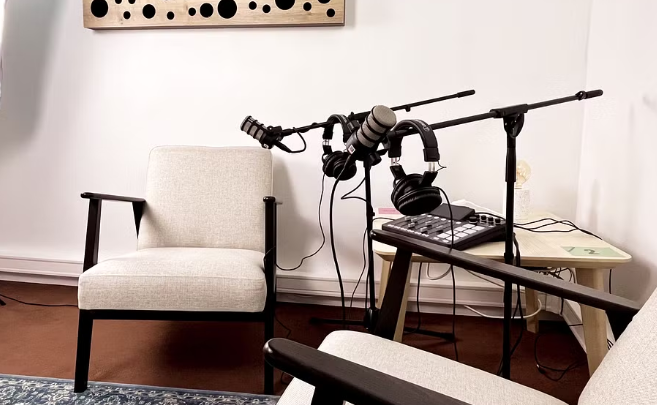How to Create a Home Podcast Studio
Got the itch to start podcasting? You’re not alone—it’s an exciting journey, and you’re clearly ready to dive in. But before you press record, it’s essential to lay a solid foundation. Crafting a podcast studio tailored to your needs isn’t just helpful—it’s necessary. Skipping over the planning phase can lead to frustration and underwhelming results.
These days, setting up a podcast studio at home is incredibly common. There’s no need to lease an upscale recording space to get started. In fact, many successful podcasters operate straight from their living rooms or closets. It’s an excellent way to begin producing meaningful content, regardless of experience level.
That said, not every room in your home is podcast-ready. Beyond technical specs, your environment should foster comfort and confidence—two things that directly influence your delivery and storytelling. Audiences are perceptive, and they’ll notice if you’re not at ease. With a thoughtfully arranged setup, you can record compelling audio right from the comfort of home.
Yes, there’s a lot to think about. But don’t stress—we’re here with smart tips and ideas to help you transform your space into a productive, professional podcasting hub.
Which Room is Best?
It might seem like a simple decision, but where you place your podcast studio can make or break your sound quality. Selecting the ideal location is more important than it may initially appear. Consider where in your home you usually retreat for some peace—perhaps a room where you can read undisturbed or a space that’s naturally quiet and cozy.
A bedroom that faces a noisy street? Probably not ideal. The sunroom next to your neighbor’s barking dog? Also a poor choice. Noise sources, echoes, and other distractions can interrupt your recording sessions. Since you’ll be spending significant time in this space, minimizing interruptions is key to producing clean audio and staying in the zone creatively.
Get the Right Tech
Once you’ve chosen the right room, it’s time to gear up. This stage is particularly exciting—there’s a wide range of microphones, audio interfaces, headphones, mixers, and even video tools if you’re venturing into video podcasting. With so many options available, it’s crucial to think about what suits your style and goals.
While flashy gear might be tempting, your priority should be achieving crisp, low-reverb sound. Quality audio equipment matters far more than bells and whistles. No matter how engaging your content, poor sound can be a deal-breaker for listeners. So choose your tech wisely—it makes a real difference.
If your budget is tight, start with a reliable microphone. We’ve shared detailed guides, like our roundup of top podcast mics from 2021, to help you navigate your choices. Bottom line: take time to research before investing.
Generally, microphones come in two types: dynamic and condenser. Each has different sensitivity levels. For home setups, dynamic mics are typically better—they’re less likely to pick up background noise like footsteps, HVAC systems, or passing cars. That added isolation can make your recordings much cleaner.
As for other equipment, your setup will vary depending on whether you’re recording solo or bringing in co-hosts or guests. A basic arrangement will do for solo pods, but always make sure your equipment fits your room and workflow comfortably.
Setting the Podcasting Mood
Think about the environment where you’re most productive. Do you prefer a bright, airy space? Or maybe a cozy nook? Your home podcast studio should reflect what makes you feel your best creatively. Reflect on past workspaces where you’ve felt uncomfortable—and avoid repeating those conditions.
One of the smartest investments is a quality chair. You’ll likely be sitting for long periods, so comfort is non-negotiable. It’s worth visiting a store and testing out different options—spin around, adjust the height, and see what supports you properly. An uncomfortable chair can lead to shifting and noise that your mic may pick up. Don’t let that impact your audio quality.
Also consider ambiance. Natural light can keep your energy up during long sessions, so a room with a window is a plus. Decorate with items that lift your mood—books, art, trinkets, or anything else that brings joy. This is your space, so make it personal and pleasant.
Even if painting isn’t an option, add pops of color through accessories. Podcast gear tends to look cold and sterile, but a splash of visual interest can make the room feel warmer and more inspiring. Scents and aromatherapy are another great way to promote relaxation and focus. A cozy throw blanket or two can help, too—whatever makes you feel most at home while creating your show.
Make it Yours (But Cozy)
There’s no one-size-fits-all method for building a home podcast studio—but if there’s one golden rule, it’s this: make it comfortable. The best recordings happen in spaces that are both technically sound and emotionally supportive. Loving your studio environment helps you show up as your best self behind the mic.
Great podcast spaces strike a balance between professional functionality and personal comfort. When you find that harmony, you’re fully prepared to record and share your voice with the world.
Every podcaster starts somewhere, and navigating the setup process is just one step in your journey. Remember, you’re not doing this alone. For a complete guide to getting started, don’t forget to check out our podcast launch checklist using the link below. We can’t wait to hear what you create!
